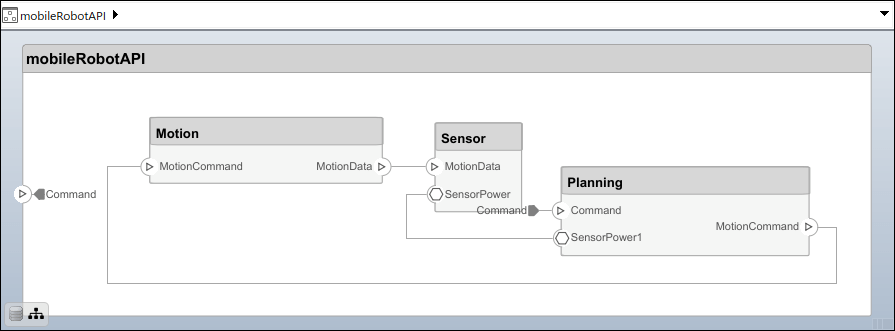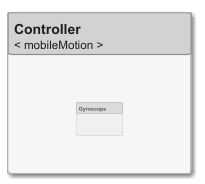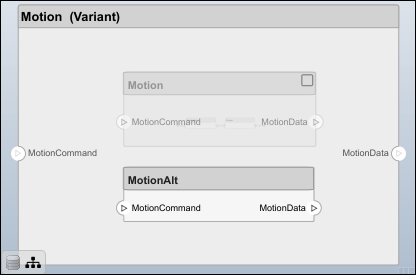systemcomposer.interface.Dictionary
架构模型数据字典的架构数据
说明
systemcomposer.interface.Dictionary 对象表示 Simulink® 数据字典中的端口接口、接口元素和架构数据部分的值类型。
注意
加载现有数据字典时,Simulink 会自动将其迁移到 Simulink 数据字典的“架构数据”分区。除了接口编辑器之外,您还可以使用架构数据编辑器和 Simulink.dictionary.ArchitecturalData 编程接口来管理和修改接口和值类型。有关管理架构数据的详细信息,请参阅Store Shared Data in Architectural Data Section和Store Data in Architectural Data Section Programmatically。
创建对象
使用 systemcomposer.createDictionary 函数创建字典。
dictionary = systemcomposer.createDictionary('newDictionary.sldd');属性
对象函数
addValueType | 在数据字典中创建命名称-值类型 |
addInterface | 在数据字典中创建命名数据接口 |
addPhysicalInterface | 在数据字典中创建命名的物理接口 |
addServiceInterface | 在数据字典中创建已命名的服务接口 |
getInterface | 获取字典中已命名接口的对象 |
getInterfaceNames | 获取字典中所有接口的名称 |
removeInterface | 从接口字典中删除已命名接口 |
applyProfile | 将配置文件应用到模型 |
removeProfile | 从模型中移除配置文件 |
save | 保存架构模型或数据字典 |
saveToDictionary | 将接口保存到字典 |
isOpen | 确定字典是否打开 |
getFileName | 获取字典的绝对文件名 |
addReference | 添加字典引用 |
removeReference | 删除对字典的引用 |
destroy | 移除模型元素 |
示例
详细信息
版本历史记录
在 R2019a 中推出
另请参阅
函数
addInterface|moveInterface|addPhysicalInterface|removeInterface|createInterface|setName|setInterface|getInterface|getInterfaceNames|addElement|removeElement|getElement|setName|setType|createOwnedType|getSourceElement|getDestinationElement|systemcomposer.createDictionary|systemcomposer.openDictionary|saveToDictionary|isOpen|getFileName|linkDictionary|unlinkDictionary|addReference|removeReference|makeOwnedInterfaceShared|addValueType|createInterface|setName|setDataType|setDimensions|setUnits|setComplexity|setMinimum|setMaximum|setDescription|addServiceInterface|setFunctionPrototype|getFunctionArgument|setAsynchronous|systemcomposer.getSelectedInterfaces|IsAdapterComponent
对象
systemcomposer.ValueType|systemcomposer.interface.DataInterface|systemcomposer.interface.DataElement|systemcomposer.interface.PhysicalDomain|systemcomposer.interface.PhysicalInterface|systemcomposer.interface.PhysicalElement|systemcomposer.interface.ServiceInterface|systemcomposer.interface.FunctionArgument|systemcomposer.interface.FunctionElement|addServiceInterface|setFunctionPrototype|getFunctionArgument|setAsynchronous





